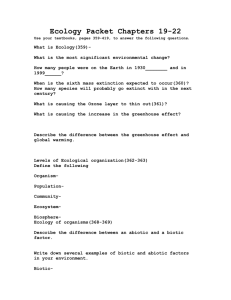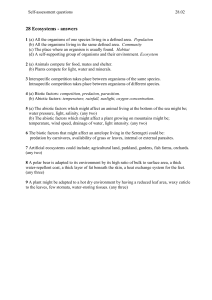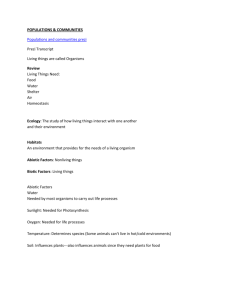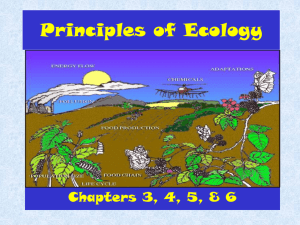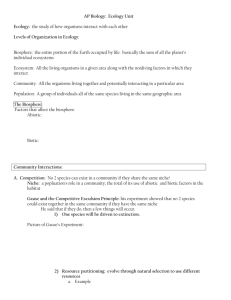Ecology—interactions between organisms and their living environment
advertisement
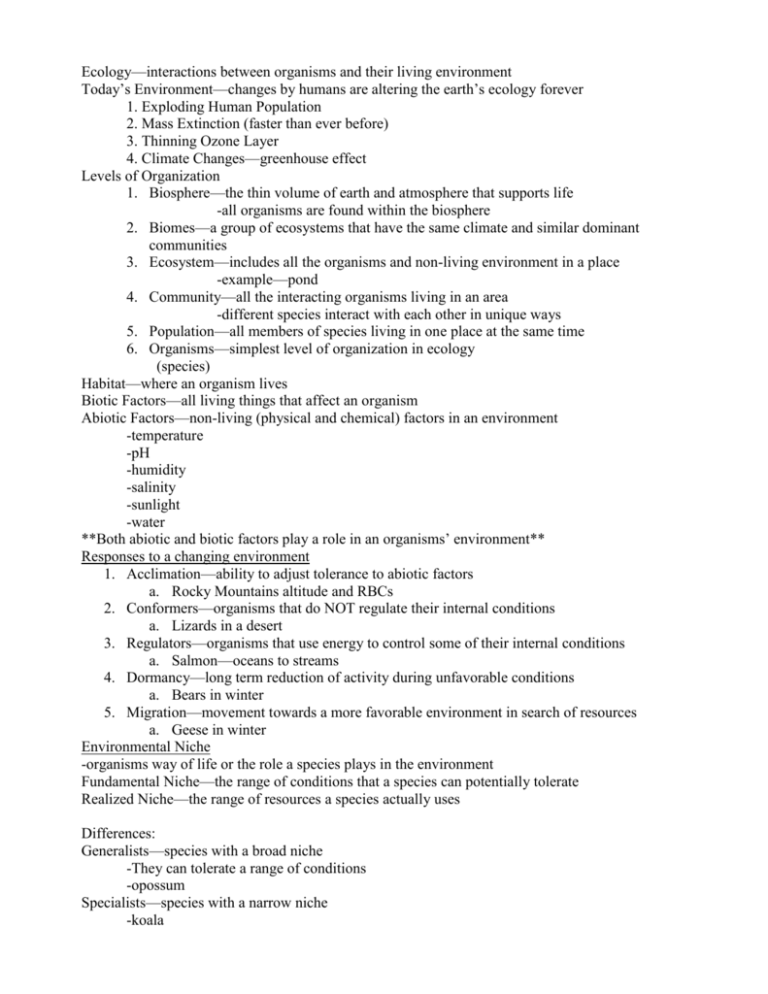
Ecology—interactions between organisms and their living environment Today’s Environment—changes by humans are altering the earth’s ecology forever 1. Exploding Human Population 2. Mass Extinction (faster than ever before) 3. Thinning Ozone Layer 4. Climate Changes—greenhouse effect Levels of Organization 1. Biosphere—the thin volume of earth and atmosphere that supports life -all organisms are found within the biosphere 2. Biomes—a group of ecosystems that have the same climate and similar dominant communities 3. Ecosystem—includes all the organisms and non-living environment in a place -example—pond 4. Community—all the interacting organisms living in an area -different species interact with each other in unique ways 5. Population—all members of species living in one place at the same time 6. Organisms—simplest level of organization in ecology (species) Habitat—where an organism lives Biotic Factors—all living things that affect an organism Abiotic Factors—non-living (physical and chemical) factors in an environment -temperature -pH -humidity -salinity -sunlight -water **Both abiotic and biotic factors play a role in an organisms’ environment** Responses to a changing environment 1. Acclimation—ability to adjust tolerance to abiotic factors a. Rocky Mountains altitude and RBCs 2. Conformers—organisms that do NOT regulate their internal conditions a. Lizards in a desert 3. Regulators—organisms that use energy to control some of their internal conditions a. Salmon—oceans to streams 4. Dormancy—long term reduction of activity during unfavorable conditions a. Bears in winter 5. Migration—movement towards a more favorable environment in search of resources a. Geese in winter Environmental Niche -organisms way of life or the role a species plays in the environment Fundamental Niche—the range of conditions that a species can potentially tolerate Realized Niche—the range of resources a species actually uses Differences: Generalists—species with a broad niche -They can tolerate a range of conditions -opossum Specialists—species with a narrow niche -koala Pg 1109 o Interspecific Interactions o Coevolution o Predator vs prey Pg 1117—Figure 53.13 Pg 1117 o Symbiosis o Parasitism o Commensalism o Mutualism Pg 1124 o Succession o Primary/Secondary Pg 1132 o Producer o Consumer o Detritivore o Decomposer Pg 1137 Fig 54.5 Pg 1139 o Cycles (Water, Carbon, Nitrogen, Phosphorous) Pg 1147 Fig 54.16—Biomagnification Pg 1154 Conservation Biologist vs Pg 1171 Restoration Biologist

